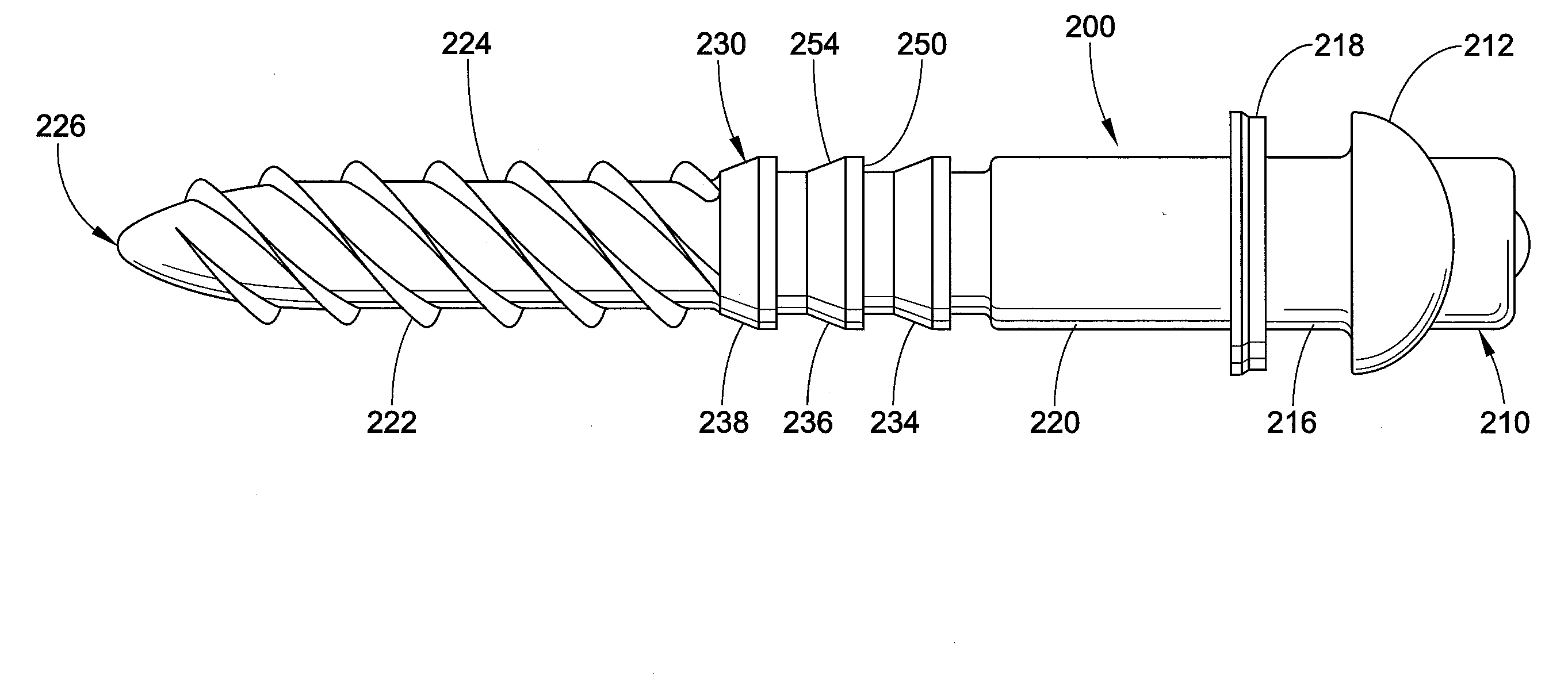Railroad spike for attaching a metal rail to a wooden tie
- Summary
- Abstract
- Description
- Claims
- Application Information
AI Technical Summary
Benefits of technology
Problems solved by technology
Method used
Image
Examples
Embodiment Construction
[0020]FIG. 1 illustrates a typical railway installation. More particularly, illustrated is a metal rail 18 which is fastened to a wood tie 9 using a fastener or spike 1 according to one embodiment of the present disclosure. A metal tie plate 12, including an elastic fastener 16, engages with a flange 14 of the metal rail 18. A plurality of such spikes 1 is inserted, each into a respective one of a plurality of apertures extending through the tie plate 12 in order to secure the tie plate 12, and hence the rail 18, to the tie 9.
[0021]With reference now to FIG. 2, the spike 1 includes a head 10 comprising a first annular flange 11 and a standoff 15 extending axially away from the flange 11 in a direction opposite to a tool grip defined on the head 10. In this design, the standoff is generally cylindrical and does not include any protrusions, such as burrs, barbs, serrations, flutes or similar rough features. Extending axially from the standoff 15 is a shank 5. Disposed between the shan...
PUM
| Property | Measurement | Unit |
|---|---|---|
| Angle | aaaaa | aaaaa |
| Diameter | aaaaa | aaaaa |
Abstract
Description
Claims
Application Information
 Login to View More
Login to View More - R&D
- Intellectual Property
- Life Sciences
- Materials
- Tech Scout
- Unparalleled Data Quality
- Higher Quality Content
- 60% Fewer Hallucinations
Browse by: Latest US Patents, China's latest patents, Technical Efficacy Thesaurus, Application Domain, Technology Topic, Popular Technical Reports.
© 2025 PatSnap. All rights reserved.Legal|Privacy policy|Modern Slavery Act Transparency Statement|Sitemap|About US| Contact US: help@patsnap.com



